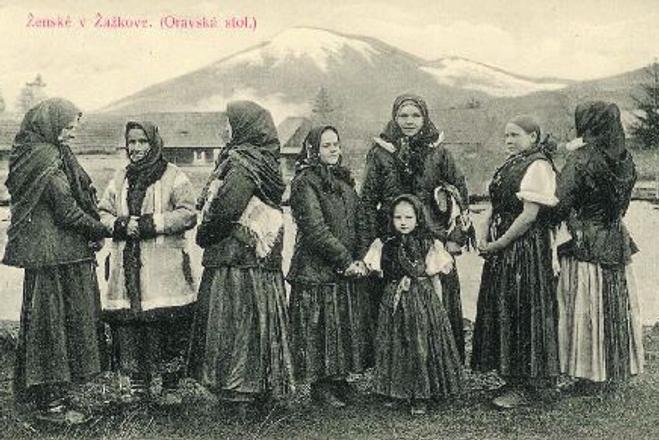THIS WEEK’S postcard, dating back to 1912, features a photograph by famous Slovak photographer and publisher Pavol Socháň. The photograph is typical of Socháň’s depictions of Slovakia and its inhabitants. Socháň was known for taking rather stylised photographs of his subjects, whom he put into various poses, which nevertheless makes them no less authentic or appealing.
This group of women comes from Lower Orava (Dolná Orava), from the village of Žaškov, near the Orava River. The village’s close proximity to the river had a major impact on the lives of the local inhabitants. If the river flooded, the village was totally cut off from the rest of the world. Normally, people were able to make it to the other bank on a big boat, called a hajov, which could carry up to 20 people.
Žaškov was founded around 1380 “according to German law”. Old German settlers are commemorated by the names of some of the nearby villages, like Duesdorf and Saskow. The second name could be a reference to Saxon settlers.
In Žaškov, as in the whole of the Orava region, breeding sheep was a crucial source of income. Starting in 1615, each municipality of the Orava domain was allotted its own fields for grazing sheep, and Žaškov’s fields were located on the Stoh hill along the main ridge of the Malá Fatra mountain range.
The annual income of the then-owner of the domain, Juraj Thurzo, was based on the number of sheep belonging to each. Thanks to carefully registered data, we know, for example, that in the Choč region, at least 750 sheep grazed, as well as 950 in Stoh and Rozsutec, 3,032 in Paráčska Magura, 2,250 in Pilsko and in the Roháče mountain range 18 villages grazed a total of 7,985 sheep. Today, such high numbers are unheard of, as well as the fact that on some hills as many as three shepherd’s ranches were operating simultaneously.
There can only be one explanation for this: by that time, the hills had been significantly deforested, which would have been caused by, among other things, the deluge of sheep that were raised in the region over several centuries.

